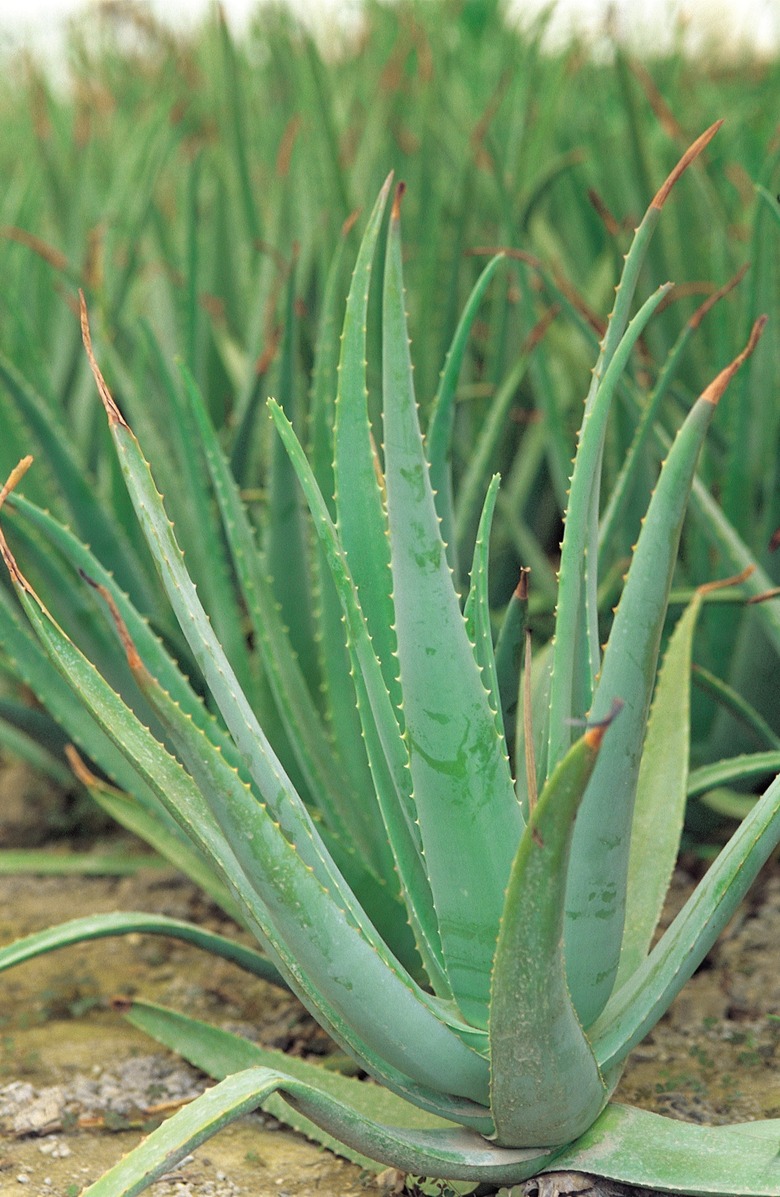How To Cut The Spines Off Of An Agave
Things Needed
- Protective clothing
- Safety glasses
- Thick gloves
- Bypass pruners
- Fingernail clippers
Agaves (Agave spp.) are drought-tolerant succulents that have long, sword-shaped leaves that open in a rosette form. While some agaves feature smooth sides, many species have hardened, needle-like tips and curled, hardened teeth along the leaf edges. Agaves with sharp spines should be kept a minimum of 6 feet away from walking areas in the yard because the spines can easily puncture skin and cause serious injury. If you have small children or pets, removing the spines is the safest option. The spines won't grow back and cutting the spines won't kill the plant.
Step 1
Wear heavy protective clothing and eyewear, such as long-sleeved shirt, gloves, pants and safety glasses or goggles to prevent skin and eye contact with the agave plant spines and sap. While the sap of some agaves is consumed, some plant saps can cause irritation upon contact.
Step 2
Cut straight across the hardened leaf tips just above the point where the fleshy leaves transition to hardened spines, using a pair of bypass pruners. Cut just above the thick, fleshy portion of the leaves, but do not cut through this flesh because this can attract pests such as the agave snout weevil that lay their eggs in damaged sections of the plant. The weevil larvae burrow into the soft tissue of the plant, introducing a harmful bacteria that rots the plant cells, decomposing the plant from the inside out.
Step 3
Cut the curled, spiny teeth from the margins of the agave plant leaves, using bypass pruners or a pair of fingernail clippers. Clip off the sharp point, leaving a dull, flat surface at each spine. Do not cut into the fleshy portion of the leaf. Start from the spines closest to the leaf tip and work your way down to the base.
Step 4
Cut the straight, pointed spines from the tips and the curled spines from the leaf margins as new leaves emerge from the terminal bud in the center of the plant. The outermost leaves of an agave are the oldest leaves; new leaves grow straight up from the center and fan out into the rosette to make room for the next series of new leaves.
Tip
Century plant (Agave americana), grown in USDA zones 8 through 10, is one of the most common agave species with spines. A few of the many other spiny agave species include: mescal (Agave parryi), grown in USDA zones 9 through 11; blue agave (Agave tequiliana), grown in USDA zones 9b and 10; and parrasana agave (Agave parrasana), grown in USDA zones 8b through 10.
References
- Tri-Valley Dispatch: Arizona Gardeners: Agave and Yucca are Great Landscape Plants
- University of California Sonoma County Master Gardeners: Agave
- University of Florida IFAS Extension: Agave and Yucca: Tough Plants for Tough Times
- Fine Gardening: Genus Agave
- Missouri Botanical Garden: Agave Americana
- Fine Gardening: Agave Parryi (Mescal)
